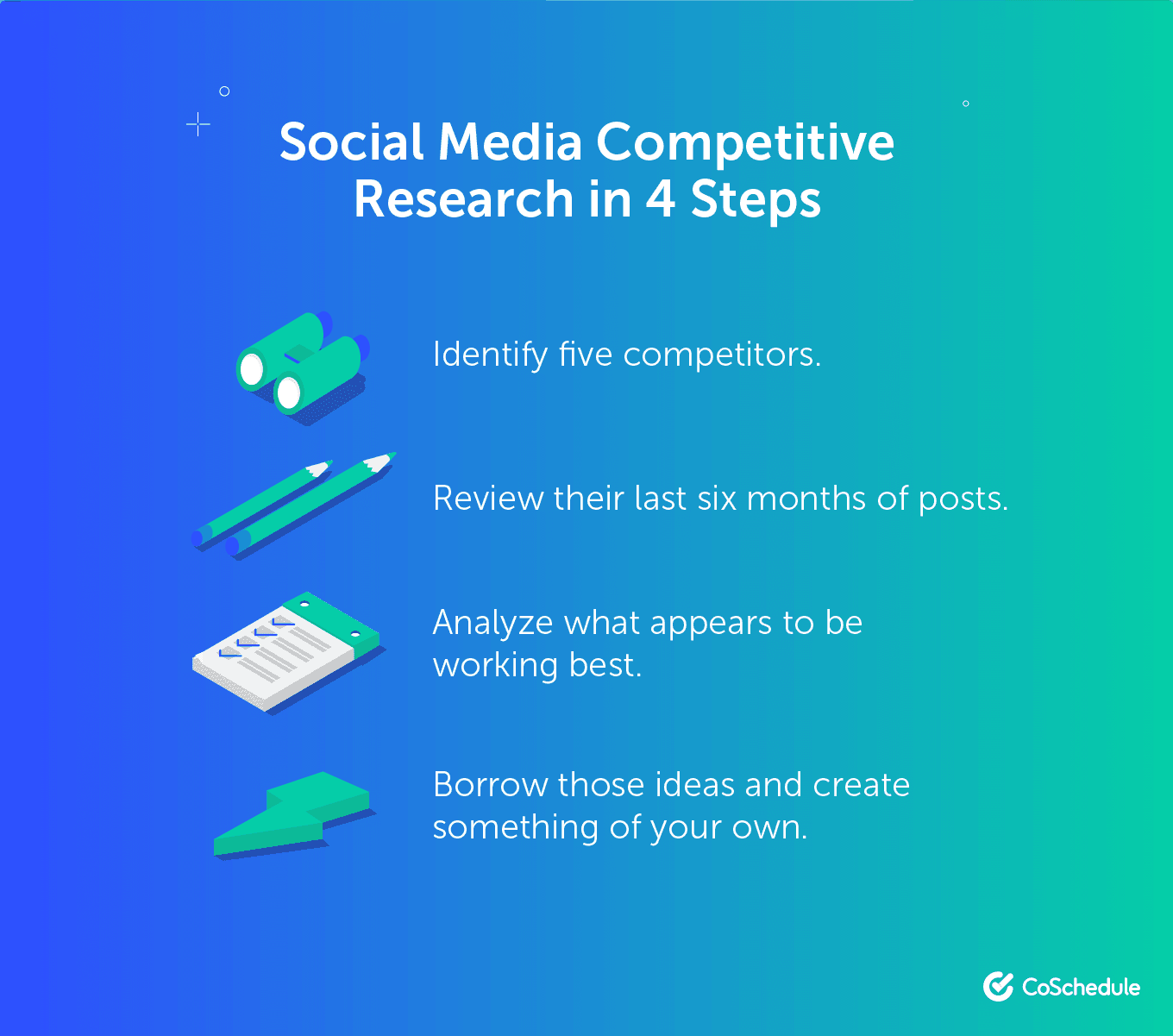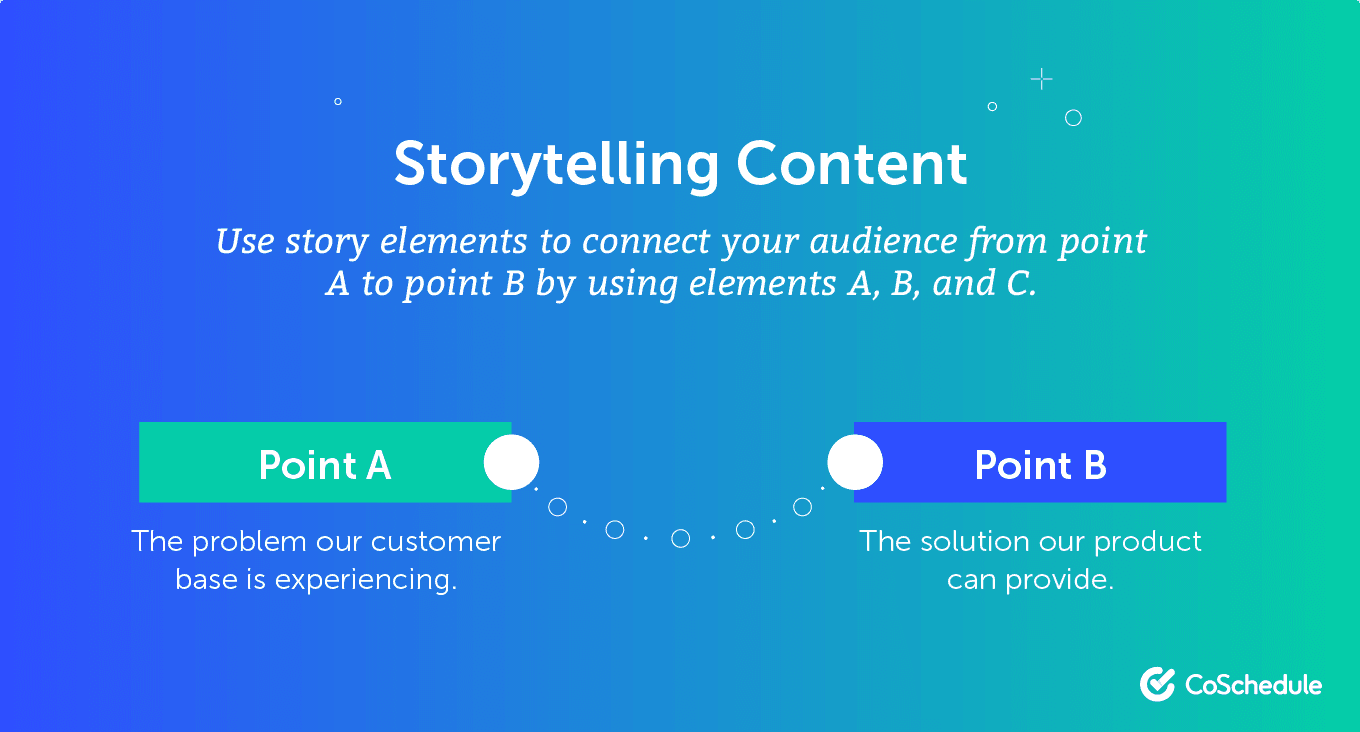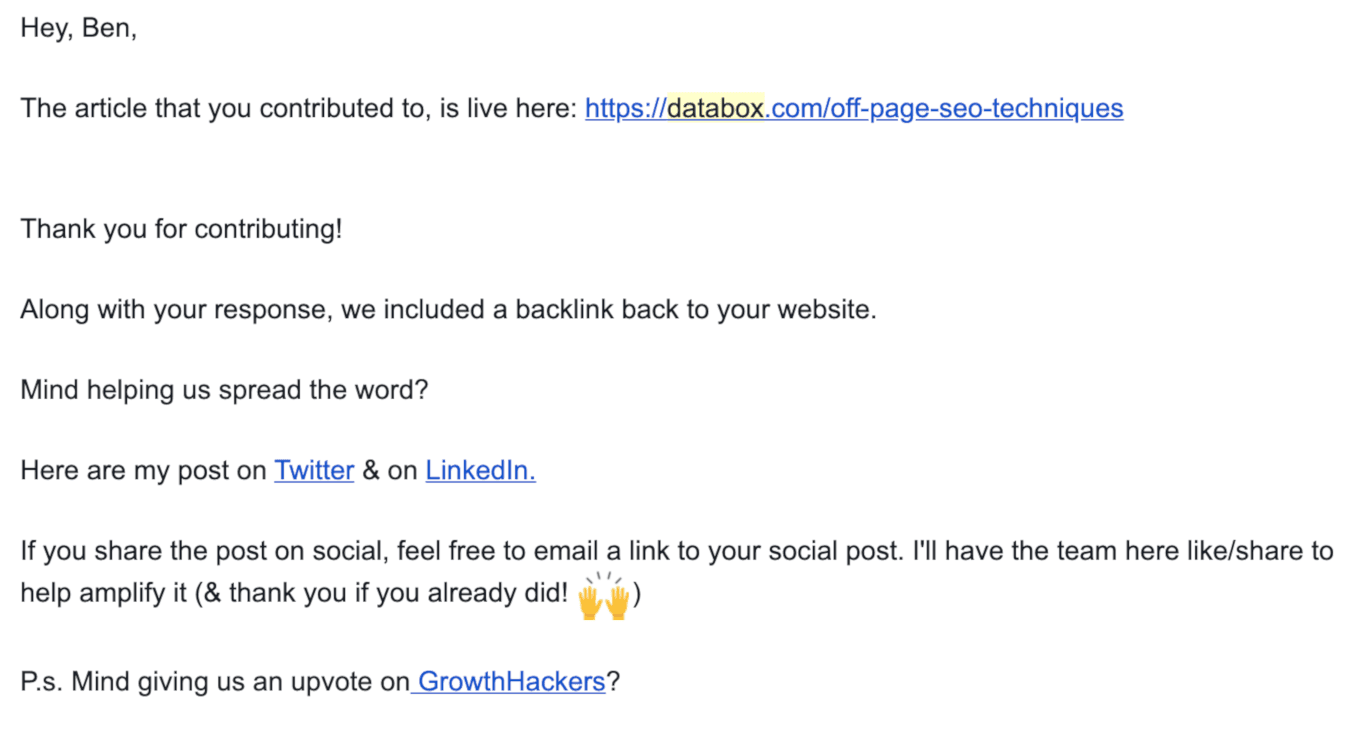13 Ways To Create Shareable Content That Actually Succeeds on Social Media
 Creating shareable content is harder now than ever. Social media algorithms have dramatically reduced reach for organic content. Studies show that usage across most networks is slowly sliding downward year over year. And there’s more competition adding to the noise every day.
With all these hurdles placed in your way, success must be unattainable, right? Not at all, or at least, not if you’re up to the challenge of standing out and rising above the sea of mediocrity currently clogging the social media sphere.
In today’s media and marketing climate, only the best content that actually deserves to get shared, will get shared. The networks themselves have made it clear they’re done doing anyone else favors on this front, and so it’s up to you to create content that people will naturally want to share with or without assistance an algorithm.
Hacks are out and creativity combined with strong execution of the fundamentals are in. And with the actionable tactics shared in this post, you’ll leave with at least a few new ideas to make your content more likely to get shared.
Creating shareable content is harder now than ever. Social media algorithms have dramatically reduced reach for organic content. Studies show that usage across most networks is slowly sliding downward year over year. And there’s more competition adding to the noise every day.
With all these hurdles placed in your way, success must be unattainable, right? Not at all, or at least, not if you’re up to the challenge of standing out and rising above the sea of mediocrity currently clogging the social media sphere.
In today’s media and marketing climate, only the best content that actually deserves to get shared, will get shared. The networks themselves have made it clear they’re done doing anyone else favors on this front, and so it’s up to you to create content that people will naturally want to share with or without assistance an algorithm.
Hacks are out and creativity combined with strong execution of the fundamentals are in. And with the actionable tactics shared in this post, you’ll leave with at least a few new ideas to make your content more likely to get shared.
More Shares. More Traffic. More Engagement. More Leads.
Getting more engagement on social media is difficult without a solid social media strategy in place. If you want to focus on generating more shares (plus more traffic, engagement, & leads), AMI’s Social Media Strategy Certification course can help you improve your social marketing skills to set your campaigns up for success. Enroll to unlock video tutorials, actionable templates, and other premium content you’ll use to level up your social strategy. Check it out to learn more.
Enroll to unlock video tutorials, actionable templates, and other premium content you’ll use to level up your social strategy. Check it out to learn more.
Why is Content Sharing in Decline?
There are a number of reasons why it’s tougher than it used to be to promote content and encourage sharing. Some of those reasons have even been touched on in this post already. But what exactly has driven this change? Let’s look at a smattering of statistics and see what story they tell:- 91% of retail brands use at least two social media networks (Adweek).
- Only 51% of US teens aged 13 to 17 use Facebook, down from 71% in 2015 (Pew Research).
- Only 12% of US adults get their news through Twitter (Pew Research).
- 51% of adults are uncomfortable with how Facebook maintains their data for ad purposes once they’re made aware of how its practices work (Pew Research).
- People care more about their personal connections than they do about brands or bloggers. Facebook adjusted their entire newsfeed to reflect this. The best-performing content on Instagram often comes from influencers instead of brands themselves. Twitter, a news-oriented network, doesn’t dominate as a distribution network.
- The once-best networks for content sharing are slowly losing steam. Despite slowly declining in popularity (and even consumer trust), Facebook is still the biggest social media traffic driver.
- You have a lot of competition. Every other brand and content creator is on the same networks where you’re competing for attention. High competition plus reduced audience interest equals a real rough time for substandard content.
13 Ways To Create Shareable Content That Actually Succeeds on Social Media via @CoSchedule
Click To Tweet13 Tactics for Creating Highly Shareable Content That You Can Use Right Now
Now it’s time to tilt the odds in your favor. To really catch some wind in your sails and turn around the ship of struggling social media performance. Each of these tips are actionable, relatively easy to apply, and can be put into practice right now.1. Do Competitive Research
One of the easiest ways to create content people want to share is to look at what’s getting shared right now So, do some spying. Look at what your competitors are doing and how their audience is engaging. This is a great way to find insights on the content your audience wants to see (provided your audiences overlap). Here’s a list of what you need to do to be a successful competitor-tracking Sherlock Holmes:- Make a list of your top five competitors and the social media channels you both are on. Where are your competitors online? If you’re on the same channels that means that you’re directly competing with them for traffic.
- Take a look at the last six months of content they’ve published. This will involve a lot of scrolling. Are they publishing blog posts, videos, or some other type of content? What types of content are you publishing that are similar to theirs?
- Note content that has gotten high engagement on each channel. Take note of the types of content that are doing best, and what seems to be falling flat.
- Use their high engagement content to inspire your own content. By seeing what your intended audience is already reacting to, you can take those conceptions and make them your own. Take what your competitors are writing about and make it 10x better. Make your audience see that you are the best option.

2. Tell A Story With Your Content
Next, let's cover how to craft strong storytelling content. Why is storytelling an important part of creating shareable content? Because it allows your audience to see themselves in a given situation, making it more relatable to their day-to-day experience. So how can you make your content tell a story for your audience? Craft your content so it has a clear beginning, middle, and end. At the end of it you should be able to answer the question, “Did my content relate to my audience and get them from point A to point B clearly?” So let’s map that out. or each piece of content that you create, write down the following:
So let’s map that out. or each piece of content that you create, write down the following:
- The problem that your audience is experiencing.
- The solution that your product or company can provide.
- How are you going to tell a story that will take your audience from Point A to Point B? Think about the steps it takes for a consumer to start with a problem and arrive at a solution:
Happy 70th birthday to The Boss, Bruce Springsteen! Did you know that Springsteen came across his famed Fender Esquire... Posted by Fender on Monday, September 23, 2019
3. Validate Your Audience’s Opinions
Another way to create shareable content is to validate your audience’s opinions. Content that reinforces the opinions your audience holds is easy to share because they now have proof from a reliable source (you!) that their opinions are correct. So how do you create that content? You need to think back to your audience. What do they like and believe in? And how can you find that information?- Think about your demographic, what are they interested in?
- What do people in your industry care about?
- What do they have differentiating opinions on?
- What are some of the opinions that you have already posted about? What did your audience have a positive reaction towards? If they feel a certain way about something, you can probably guess they have a certain belief.
.TechRepublic names their top 10 cities for #womenintech in the US. Nearly all of them have a local GDI chapter! http://tek.io/2nfsGWb ? Posted by Girl Develop It on Tuesday, March 28, 2017
4. How Can You Use Controversy In Your Content?
Why would you want to cause controversy? That seems like the exact opposite of what you would want to do. Wouldn’t you rather have people agree with you? Not necessarily. Sometimes you need to take a stand on a point or an issue. Otherwise, being agreeable all the time can leave your content bland (and nobody is passionate about sharing bland content). So how can you create the content that will play devil’s advocate to your audience’s opinions? Your exercise this time will be the reverse of the previous one. If your audience aligns their values on one side of an argument, how could you reintroduce the other side to encourage shares? So what does this content look like? Check out this tweet from Inc:This tweet is short and simple, but it immediately tells the reader they'll learn something that likely contradicts their current thinking. Since it pertains to something as important as marriage, there's added incentive to click as well.Studies show these are the qualities to look for in a partner or spouse. They aren't what you think. @MindaZetlin https://t.co/LkcwJWU8fw
— Inc. (@Inc) September 30, 2019
5. Appeal To Your Audience’s Values
Another way to connect your audience to your content and encourage them to share it is to create content that revolves around their values. Your audience wants to know that the values of your company or product align with theirs. Connecting their values to your content is one way to show that you care. Okay, so that’s great advice but how do you implement it? We’re going back into your audience research. You know what your audience believes and some of the basic demographics of your target audience. You may have to generalize a bit, but what would your target demographic care about? For example, if you’re targeting new moms, maybe your content connects to a fundraiser for the March of Dimes. Or, maybe your audience cares about products that are made in the USA so you run a blog post on how the new line of products coming into your store Or, maybe your audience cares about products that are made in the USA, so you run a blog post on how the newest line of products coming into your store is made in the USA only. One way to figure out the values of your audience is to look to your past content. What values have you talked about before that your audience has made a connection with? Now, what does that content look like in action? Take a look at this example from cleaning product company Seventh Generation. Their customers care about the environment, and they’re willing to take hard stances on green issues:On September 20th, Seventh Generation will be closed for business as we stand alongside those fighting for climate... Posted by Seventh Generation on Tuesday, August 27, 2019
- You care about [Value]. At [Brand name] we do to!
- At [Insert Brand Name] we’re constantly looking forward which is why we believe in [Value].
- Our customers believe in [Value], [Value] and [Value]. At [Brand Name] we do too.
6. Make Your Content Useful
In order to encourage shares, your content needs to be useful to your audience. This is so important that the New York Times did a study and found that 90% of users will assess the usefulness of the content before sharing it. So how do you ensure the content you’re creating is useful to your audience? First, think about the question or problem that your content is addressing. What are you trying to help your audience solve? Then your content needs to provide step by step information on how to solve the problem or answer the question. These steps can include your product or exclude it, depending on what you’re looking to do. Your final step will include some sort of CTA. This could be as simple as a click-to-tweet button or an encouragement to share this post with someone else who would gain more by seeing the information you provide. So what does that content look like in real life? Content that is useful to our audience is something that we strive to create at CoSchedule every day. We want our content to be actionable and help our readers, help themselves: Our blog posts tell our reader exactly what they’re going to learn when they take the time to read our content, letting them decide if it’s useful to them or not. Our social posts will also carry out the same tone that our audience is going to be getting useful information out of our blog posts that they could then share with their colleagues:Trust us when we say organized marketers are 397% more likely to be successful. Here's one way you can get more organized. ?? https://cos.sc/2ZTfZ68 Posted by CoSchedule on Wednesday, September 4, 2019
7. Capitalize On Trending Topics
If you’re struggling to come up with content for your brand or company it’s ok. There is a vast source of information, trends and more that are constantly changing, giving you unlimited ideas to content. What do I mean by this? Create your content around trends. If you’re a hot dog vendor, creating content around National Hotdog Day is a great way to spread the word about your business. But with trends changing so quickly, how can you find them all? Google Trends was created to do that work for you. With a quick search, you can find all the trending topics for that day and see if any of them fit into a potential content idea for your team. Pretty slick huh? So what does it look like when a brand or company maximizes on trending content? Take a look at this example from Foot Locker, which works in some self-deprecating humor while sharing a public comment someone had made:Referees after @camjordan94 called them Foot Locker employees...??? https://t.co/xWj2YOg4yr pic.twitter.com/CBNQkK0vkl
— Foot Locker (@footlocker) September 16, 2019
8. Add Shareable Video and Images
Why are images and video so important? According to Hubspot, 33% of all internet activity is watching videos. And according to BrainRules, you’ll remember 65% more of the information you see if an image is attached to it. Both of these types of content are highly shareable too. In fact, BuzzSumo found that blog posts with graphics placed every 75-100 words get twice as many social shares. Fortunately, creating graphics and videos isn’t nearly as difficult as it used to be. Marketers with in-house design teams won’t have to worry about this, but if you don’t have those kinds of resources, you can easily design images and infographics with these tools: And for creating quick videos, Wistia’s Soapbox makes it possible with Chrome and your computer’s webcam.9. Place Sharing Buttons Where They’ll Be Seen
Let’s be honest here for a second. People are not going to share your content if it’s not convenient for them. Which means that you as it’s creator need to make that content as easy to share as possible. How can you do this? Make sure that every piece of content that you publish has share buttons. These buttons make it easy for your audience to click and share in one easy motion. We even broke down where you can place your buttons in this blog post. Your social media buttons can go anywhere on your content but the more visible you can make them the better. For example, take a look at a blog post from Social Media Examiner. Their social share buttons sit on the left-hand side of the screen and follow the user as they scroll down the post.
10. Get Your Audience Involved in Your Content Creation
Here’s an interesting tactic from the team at Databox. They routinely invite email subscribers to take part in research surveys to get marketer’s thoughts on a variety of topics. Then, they’ll gather quotes to include in blog posts, which they subsequently promote all over social media. Participants get some exposure and a backlink, and they’re naturally incentivized to share that content. Here’s a breakdown of how this works:- Email your list asking if recipients would like to take part in a survey. Make sure to mention what’s in it for them (a backlink and a mention in the post).
- Write a blog post about that topic. And incorporate quotes and findings from the responses you receive.
- Contact everyone mentioned in the post thanking them for their participation. In your email, encourage them to share the piece too.
 Those insights and quotes are then incorporated into a blog post:
Those insights and quotes are then incorporated into a blog post:
 And each person included is sent an email with convenient links to find and share the post:
And each person included is sent an email with convenient links to find and share the post:
 The results speak for themselves. While 15 retweets on this one tweet might not seem like much, consider that a few dozen folks quoted in the piece shared this too. That leads to a lot of compound sharing that just wouldn’t happen with an ordinary blog post.
The results speak for themselves. While 15 retweets on this one tweet might not seem like much, consider that a few dozen folks quoted in the piece shared this too. That leads to a lot of compound sharing that just wouldn’t happen with an ordinary blog post.

11. Get People Inspired
Another way you can encourage your audience to share your content is if it inspires them. Check any Instagram feed and you’ll probably find an inspirational quote more often than not. Why is inspirational content so popular? According to the Harvard Business Review, there are a variety of factors, but one is that it transforms the way that we perceive our own capabilities. Who wouldn’t want to share content that makes them feel like that? So how do you create inspiring content? Unlike some of our other tips, you can’t force yourself to create inspiring content. You can however, trigger inspiration. Inspiration should come naturally and there are ways to find it in your content. Look for quotes that would apply to your audience in their current state or inspire them to get to a new one. Here's an example from St. Jude's Children's Hospital:Making Art, Making Meaning: Michelle's Story When Michelle was treated for leukemia at St. Jude 45 years ago, her chances of survival were 50%. Now, she makes art to show support for the hospital that helped save her life. Posted by St. Jude Children's Research Hospital on Monday, March 18, 2019
12. Create Something Relatable to a Basic Human Experience
People use social media for personal expression. So create content that helps them express themselves. This example from SEGA plays off a common anxiety people experience while working in some humor. Of course people will want to share something like that:On our way to the food table while avoiding people at a party.#MarioandSonic pic.twitter.com/qYzloGeQHA
— SEGA (@SEGA) September 20, 2019
13. Build Hype for Something You’ll Launch Soon
People love to say they were the first to hear about something. Creatively hype your next launch (whether that’s a product, feature, service, or something else) in a way that gets people talking. This example from Netflix makes inventive use of emojis to get people talking about an upcoming show:????????????????????????????????????It's just grass.????????????????????????????????????IN THE TALL GRASS coming to @Netflix October 4th.??????????????????????????????????? pic.twitter.com/AZBiGVlLeu
— Netflix Film (@NetflixFilm) September 17, 2019
Who Needs an Algorithm?
While the road ahead won’t be easy, you’re now equipped with the knowledge you need to create content that’s optimized for sharing, and encourages people to spread your message for you. Plus, with some creativity and experimentation, you might find some tactics of your own that help you get the most reach possible from every piece. And if you’re looking for more tips & best practices to generate more engagement, check out AMI’s fluff-free social media training course - Social Media Strategy Certification. Enroll to unlock premium videos, templates, and downloads to guide you to a successful social strategy.
This post was most recently updated on Oct. 2, 2019. Breonna Bergstrom contributed to this content.
And if you’re looking for more tips & best practices to generate more engagement, check out AMI’s fluff-free social media training course - Social Media Strategy Certification. Enroll to unlock premium videos, templates, and downloads to guide you to a successful social strategy.
This post was most recently updated on Oct. 2, 2019. Breonna Bergstrom contributed to this content.


